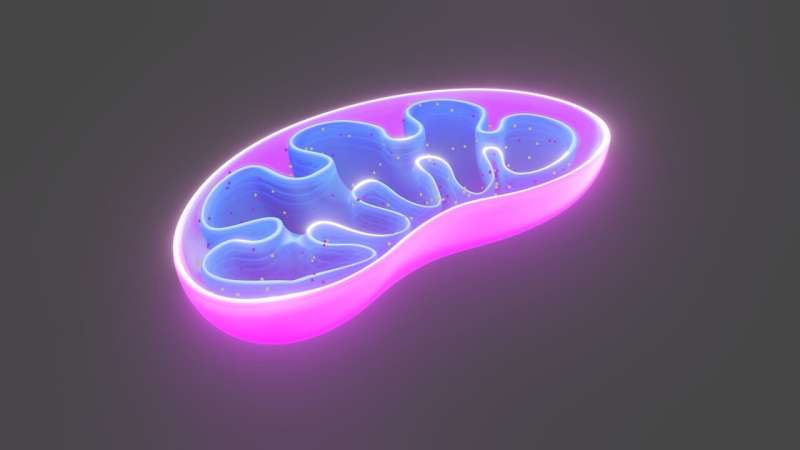Credit: Pixabay/CC0 Public Domain
New research in the journal Nature Aging takes a page from the field of renewable energy and shows that genetically engineered mitochondria can convert light energy into chemical energy that cells can use, ultimately extending the life of the roundworm C. elegans. While the prospect of sunlight-charged cells in humans is more science fiction than science, the findings shed light on important mechanisms in the aging process.
"We know that mitochondrial dysfunction is a consequence of aging," said Andrew Wojtovich, Ph.D., associate professor of Anesthesiology and Perioperative Medicine and Pharmacology & Physiology at the University of Rochester Medical Center and senior author of the study.
"This study found that simply boosting metabolism using light-powered mitochondria gave laboratory worms longer, healthier lives. These findings and new research tools will enable us to further study mitochondria and identify new ways to treat age-related diseases and age healthier."
Mitochondria are organelles found in most cells in the body. Often referred to as cellular power plants, mitochondria use glucose to produce adenosine triphosphate (ATP), the compound that provides energy for key functions in the cell, such as muscle contraction and the electrical impulses that help nerve cells communicate with each other.
Production of ATP is the result of a number of reactions made possible by the exchange of protons across a membrane that separates different compartments in mitochondria, ultimately forming a process called membrane potential. It has been shown that membrane potential declines with age, potentially playing a role in a number of age-related diseases, such as neurodegenerative disorders.
The new research involved C. elegans, a microscopic roundworm that—like the fruit fly Drosophila—has long been a research tool used by scientists to understand basic biological principles that, in many cases, apply throughout the animal kingdom.
To carry out the experiments, a team of researchers from the U.S. and Germany adapted an existing research tool that allowed them to manipulate activity in mitochondria. The technique, called optogenetics, has been traditionally used to target and activate specific neurons, thus enabling researchers to more precisely study patterns of brain activity.
The researchers genetically engineered C. elegans mitochondria to include a light-activated proton pump obtained from a fungus, an achievement the team first described in a 2020 paper in the journal EMBO Reports.
In the new study, when exposed to light, the proton pumps would move charged ions across the membrane, using the energy from the light to charge the mitochondria. This process, which the researchers dubbed mitochondria-ON (mtON), increased membrane potential and ATP production, and resulted in a 30-40% increase in lifespan of the roundworms.
Brandon Berry, Ph.D., who received his doctoral degree in physiology from the University of Rochester and is now a post-doctoral scholar at the University of Washington, is first author of both studies. "Mitochondria are similar to industrial power plants in that they combust a source of carbon, primarily glucose, to produce useful energy for the cell," said Berry.
"What we have done is essentially hooked up a solar panel to the existing power plant infrastructure. In this instance, the solar panel is the optogenetic tool mtON. The normal mitochondrial machinery is then able to harness the light energy to provide the ATP in addition to the normal combustion pathway."
The study is important because it provides researchers with more insight into the complex biological roles that mitochondria play in the human body, a topic that the scientific community is only now beginning to understand. The study also creates a new method to manipulate and study mitochondria in the environment of a living cell. This could serve as an important platform to study mitochondria and identify ways to intervene and support function.
"We need to understand more about how mitochondria truly behave in an animal," said Berry. "First in worms, like the current study, but then in human cells in culture and in rodents. That way future research will be well informed to target the most likely players in human disease and aging."
More information: Optogenetic rejuvenation of mitochondrial membrane potential extends C. elegans lifespan, Nature Aging (2022). DOI: 10.1038/s43587-022-00340-7. www.nature.com/articles/s43587-022-00340-7
Journal information: EMBO Reports , Nature Aging
Provided by University of Rochester Medical Center
























